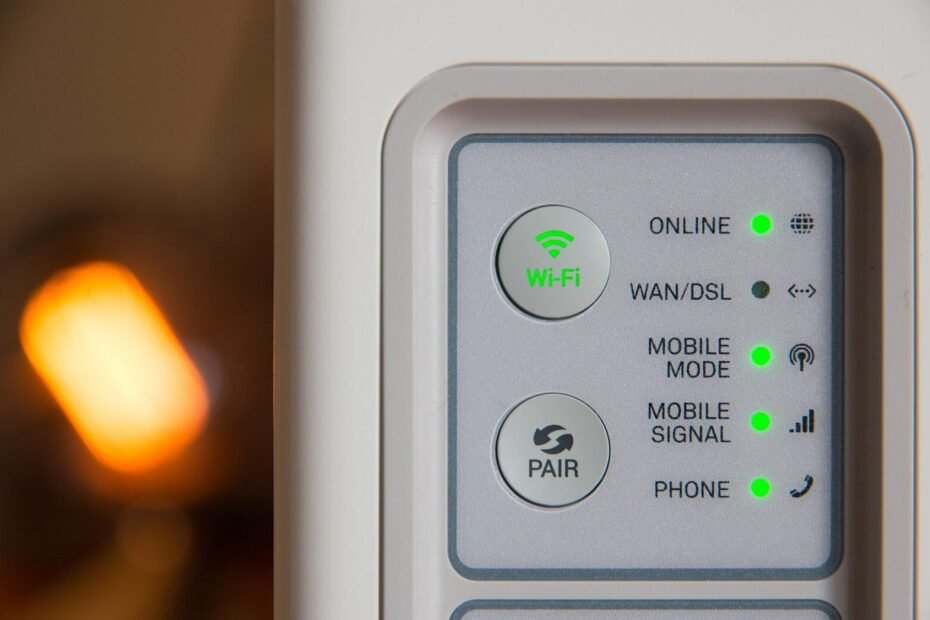In today’s digitally connected world, Wi-Fi has become a necessity for both work and leisure. However, we have all experienced the frustration of slow speeds, weak signals, or a complete lack of connection. The good news is that these common issues can often be resolved with simple troubleshooting steps. This article will explore the most common Wi-Fi problems and provide solutions to fix them. So, whether you are working from home or streaming your favorite show, read on to learn how to troubleshoot Wi-Fi issues like a pro.
Common Wi-Fi issues and their causes
To get the best performance from your Wi-Fi router, it’s important to understand common Wi-Fi issues and what causes them. Here are some common Wi-Fi issues and their causes, whether you’re using an existing router or looking for the best Wi-Fi router to upgrade your network:
- Intermittent Connectivity: If you’re experiencing Wi-Fi signal drops, it is either network congestion or an outdated router.
- Slow Speeds: Slow Wi-Fi speeds can be frustrating, and this issue can be caused by network congestion, outdated hardware, or interference from other electronic devices.
- Weak Signal: When your Wi-Fi signal is too weak, it can be tough to connect to the network. Long distances between your device and the router, physical barriers such as walls, or interference from other electronic devices are common causes of weak signals.
- No Connection: When you’re unable to connect to your Wi-Fi network at all, check for incorrect network settings, outdated router firmware, or a problem with your device’s Wi-Fi adapter.
- Devices Unable to Connect: If a specific device is unable to connect to the Wi-Fi network, it could be due to incorrect network settings, outdated firmware, or a problem with the device’s Wi-Fi adapter.
- Security Issues: Wi-Fi networks that are not secure are vulnerable to unauthorized access. Common reasons are weak encryption or password, or outdated security protocols.
Diagnosing Wi-Fi Issues
Your first step to solving Wi-Fi problems is to troubleshoot Wi-Fi. Here’s how:
Checking Wi-Fi signal strength
Use your device’s Wi-Fi signal indicator to see how strong your signal is. If the signal is weak, try moving closer to the router or eliminating any physical barriers between your device and the router.
Running a speed test
Use an online speed test to see how fast your Wi-Fi connection is. If your speed is significantly slower than what you’re paying for, it could be due to network congestion or an outdated router.
Checking Wi-Fi settings
Check your Wi-Fi settings to ensure that they’re correctly configured. Make sure that you’re connecting to the correct network and that you’re using the correct password.
Examining hardware issues
Check your router and modem for any physical damage or malfunctioning parts. If you suspect that the hardware is the issue, you may need to replace it.
Troubleshooting software problems
Check for any software updates for your router or device. If the issue persists, try restarting your device or resetting your router.
How to Fix Wi-Fi Issues
Once you’ve identified the root cause of your Wi-Fi issue, here are some steps you can take to fix it:
Resetting the router
Sometimes, resetting the router can fix Wi-Fi issues. To do this, unplug the router, wait for a minute, and plug it back in.
Checking for firmware updates
Check your router manufacturer’s website for any available firmware updates. Updating your firmware can improve your router’s performance and fix any known issues.
Changing Wi-Fi channels
If you’re experiencing Wi-Fi interference, changing the Wi-Fi channel can help. Use a Wi-Fi analyzer app to identify which channel has the least interference, and then change your router’s channel settings.
Moving the router to a better location
Once your Wi-Fi signal is weak, try moving your router to a more central location in your home or office. Avoid placing it near any physical barriers or electronic devices that can interfere with the signal.
Upgrading equipment
Your router or modem may be a very old version. Consider upgrading to a newer model. Newer models often have improved performance and more advanced features.
Reinstalling drivers
If you’re experiencing issues with a specific device, try reinstalling the Wi-Fi adapter drivers. This can help fix any software-related issues that may be causing connectivity problems.
Conclusion
In short, Wi-Fi issues can be frustrating but with some troubleshooting, most problems can be fixed. Don’t throw your router out of the window just yet! By following these tips, you’ll be streaming, browsing, and working smoothly in no time. Remember, when in doubt, turn it off and on again – it’s a classic for a reason!
